Why do we love them so? They’re exotically beautiful and they transform in magical ways. They’re symbols of Soul in many cultures and in my life–always a thrill, a surprise, a joy.
After last year’s dry summer butterfly scarcity, the winged population rebounded in 2021. I saw butterflies I hadn’t seen for years and a few I’d never seen before. I’ll take you through a photo trip of what I saw in forest, fields, and gardens. The season started in early April with a Mourning Cloak in the forest, and by early June, Pearl Crescents and Skippers were everywhere in the fields. Eastern Tiger Swallowtails arrived in June, too. When Monarchs showed up, I gathered eggs. It was butterfly heaven on my New York Finger Lakes land in a world where so much is parched.
***
What lifts your spirit and feeds your Soul this challenging summer? For other posts about butterflies, see a favorite on Monarchs, Dancing with Monarchs, Defying Despair. For a post on the beauty of the forest and how it nourishes the Soul, see Rooted: Grounded in a Precarious World.
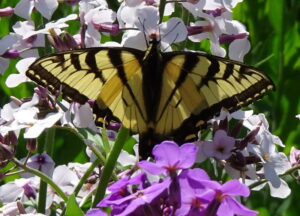


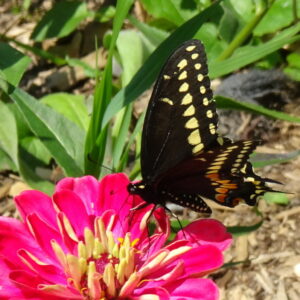
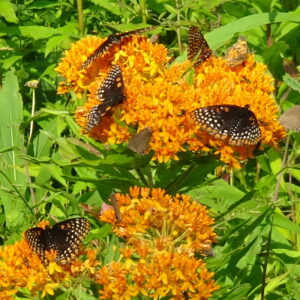
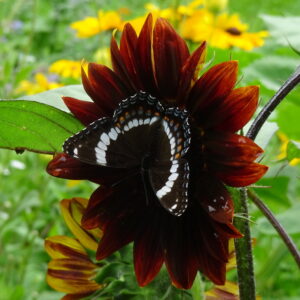



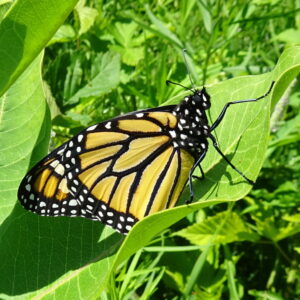
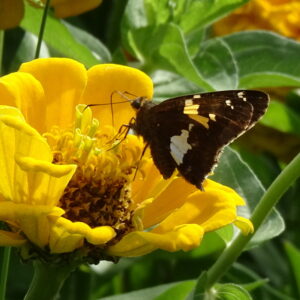
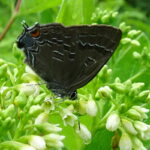
Dear Elaine,
What has lifted my spirits and fed my soul this challenging summer? Well, let’s start with your beautiful blog Mama Monarch, which has not only been a joy to visit and peruse but has also been an education in all things psyche, soul and butterfly … actually this has been happening over several summers now. Your bright, vibrant photographs are simply wonderful and thank you so much for naming each of these amazing winged angels. I’ve seen four possibly five of the ones you’re showcasing today.
Unfortunately, living down in the south (UK) we don’t get to see those distinctive looking black Swallowtails but they do breed here in other areas, just not mine. Oh my goddess, butterflies not only animate our summers with their beauty and grace … they’re the real stars aren’t they! And what a passion butterflies have become for you, what joy and how lucky we your readers are as you generously share that joy and knowledge with us. Thank you so much for educating me and firing my imagination!
Love and light, Deborah.
Dear Deborah, as you know, I’m butterfly obsessed in the summer–and I wonder how I survive the drab brown-grey-white winters. There’s so much color around me now and it’s raining to bring on more autumn flowers (I wish we could share the rain with the western USA and Siberia). I found new spring green milkweed shoots in the field looking lush and tender for the migrators. Of course, I found a few caterpillars as I inspected and brought them home. So many irresistible caterpillars and chrysalises! A glorious bounty with two new butterflies so far today, one female and one male. They want out, so I put them on the outside of their crate to let them decide. The female flew. The male waits.
I’m sure you have butterflies we don’t have here, but there’s a big overlap. I wish I could learn more about the pre-Hispanic butterfly rituals and beliefs in Mexico, but that cultural history is sparse. There must have been a Monarch goddess, but I can’t find a trace and asked many Mexican scholars who would know. I’ll need to create my own Monarch goddess–and maybe that’s what I’m doing now. Thank you for support, inspiration, and interest in this world of Psyche. And thank you for the crone image you shared with a moth which is appropriate since many moths are active at night. With love to you across the sea.
Just a thought Elaine, a quick online search of “Mexico Butterfly and Goddess” has brought up the Aztec goddess Ītzpāpālōtl. Apparently back in the day, she was known as “Obsidian Butterfly” which might interest you. There’s a Wikipedia page all about her if you haven’t already discounted her from your research. If so, yep, it looks like you’ll be creating your own Monarch goddess. Sending love and light and much laughter (I’m thinking cornflowers!) across the oceans and oaks between us, Deborah.
Thanks for looking, Deborah. I did extensive research on Itzpapalotl a few years ago with a few librarians, sure I’d find a Monarch goddess near the Monarch winter site which is a small area. I learned about the fierce Aztec Warrior Goddess which appears to be unrelated to the Monarchs or the region of Mexico where the Monarchs winter (Michoacán). I interacted with a language scholar (also painter of images in ‘The Toltec I-Ching’) and an anthropologist. No matter how I wished otherwise, they said Itzpapalotl is not a Monarch and is closely related to a bat or lizard as well as butterfly (but not specifically Monarch). So much of the history is lost. And what was once thought to be a Butterfly Temple in the Aztec Center in Mexico City is no longer identified as a butterfly. These scholarly women had searched for Monarch connections and knew the pre-Hispanic language, but hadn’t found a reference to a Monarch. I ran into many dead ends and the mystery remains.
Thank you for the Lepidoptera show: Marvelous, Elaine!
TODAY I refreshed the nectar in my hummingbird feeder, hoping hummies will respond to the ruby-throated Allamanda blooms close by.
I have a hummingbird feeder, too, Marian, but I just read that the major part of their diet is insects. I found this by googling “What insects do hummingbirds eat”: “The hummingbird menu includes such insects as ants, aphids, fruit flies, gnats, weevils, beetles, mites and mosquitoes. They also raid spider webs to grab a quick spider meal and any hapless insects trapped there.” I’m glad they love our flowers, too. Wishing you a healthy autumn.
Thanks for the illumination, Elaine. The hummingbirds can have ALL our mosquitoes and gnats!
Wow, dear Elaine, the Master of Butterflies! You have brought paradise here. Thank you so much for such beautiful pictures. For me, unfortunately, it was not the summer that I wish to have, mostly chilly and rainy. But I have seen a lot of butterflies (and admirals too, of course!) Although, these Monarchs are such exemplars and extraordinary ones. Thank you again.
Aladin, we’ve had a cool rainy summer, too, but I don’t complain because I have so many friends suffering from wildfire air pollution and drought in the western US. A few friends have had to leave their homes because of the smoke and I just read that the worst wildfires in the world are in Siberia. I’m thankful when it rains. I’m glad you had your warm time in beautiful Greece.
I crave this beauty as an antidote to the news and suffering of the world. The Monarchs stand out because of their extraordinary migration. They inspire me with their tenacity and toughness mixed with beauty and fragility. May they thrive–and may you thrive.
Even I am recognizing the magic in butterflies these days. And I’m definitely not into bugs or anything that flies. There is something so gentle and peaceful about butterflies that I can’t help but think of them as the souls of lost loved ones transformed into sweet delicate flitting bits of light.
Robin, you’re named after something that flies, but I assume you mean insects. It’s mosquito season with this rain, but it’s also bringing on a late crop of tender milkweed for the fall Monarch migrators. I love the different ways they fly–flitting, darting, zooming, riding the wind. Monarchs float along unless one is a male looking for a sexual partner. You and the Mexicans see the Monarchs as souls of those who’ve died. Those ancient traditions are rich and mostly lost, but I imagine there was a Monarch Goddess. Thanks for your interesting perspective and horizons.
Thank you Elaine so much. Butterflies that flutter by – who can not be captivated. I so enjoy your photographs, delicate creatures of such beauty and flight that all the troubles of the world fall into the background momentarily.
The first signs of spring are showing in various parts of South Africa. I’m in Cape Town right now, visiting my sister and a few friends. My sister and I MAY go up country for a day, maybe overnight on Sunday to see the Namaqualand flowers, a sight to behold. The weather report is good, if there’s sunshine then this is an added bonus.
Susan, I just searched “Namaqualand flowers” and came up with incredible beauty. I hope you see them even if you’ve seen them before. I can’t wait for the blog. Vic and I once went to Death Valley on our way to California and they were having a “100 year bloom” after unusual winter rains. It was in the late 1980s. I’ll never forget the way my hiking boots were completely yellow from pollen. Like all of us, you probably need that colorful joy.
What beautiful butterflies! We don’t see them very often in downtown Toronto.
Thank you, Lydia. Butterflies are abundant on my rural land this season. All sorts, but especially Monarchs.
Dear Elaine,
What a lovely butterfly photo trip you took your readers on through the forest, fields, and gardens you have visited this year! The mourning cloak butterflies seem to be the most abundant where I live, and every so often they land on us, which always feels like a blessing. I have recently started taking pictures with my phone, and I thought of you the other day when I managed to “capture” a Western tiger swallowtail.
I did a little bit of reading regarding the staggering drop in the Western Monarch butterfly population last winter and was encouraged to read that “The Monarch is like the cockroach of butterflies,” according to David James, associate professor in Washington State University’s Department of Entomology: “It’s very persistent and adaptable all around the world. The population decline is very worrying, but I remain optimistic that it will persist in the western US, although maybe at lower levels than before.”
You asked your readers “What lifts your spirit and feeds your Soul this challenging summer?” and I have to agree with Deborah’s comment that your beautiful blog definitely has that joyful and nourishing effect on me. You also wondered out loud how you survive the drab brown-grey-white winters, which brought to mind some lines I love from Denise Levertov:
“I’ll dig in into my days, having come here to live, not to visit. Grey is the price of neighboring with eagles, of knowing a mountain’s vast presence, seen or unseen.”
On the darkest days here in winter, of which there are many (we get over 100 inches of rain a year and the sun sets before 4:30 on the shortest days), I recite these lines to myself.
Thank you for this infusion of joy!
Thank you, Anne. All the photos came from butterflies on my land in the gardens and fields. I have a FaceBook friend who supports the Monarch population in Southern CA with his own large Monarch nursery and now a butterfly garden supported by the town library. Many are trying to save the Western Monarch, but the fires make it hard. Thanks for your kind words about my blog.
I love the Denise Levertov quote. Today is a cool grey reminder of what’s to come here, but I have all the right clothes for fierce winter, including a warm jacket for short-haired Disco, and now my trekking poles which will work well with snow shoes. (It will get warmer and there are still 40 chrysalises in the nursery. The last migrator usually flies around Oct. 1) We average about 50 inches of rain a year, but that’s not counting the snow which can be fierce, prolonged, and icy. I’m glad to hunker in at home during winter storms. Thank you for the infusion of love! May we all have joy as the days get shorter and the pandemic lingers.